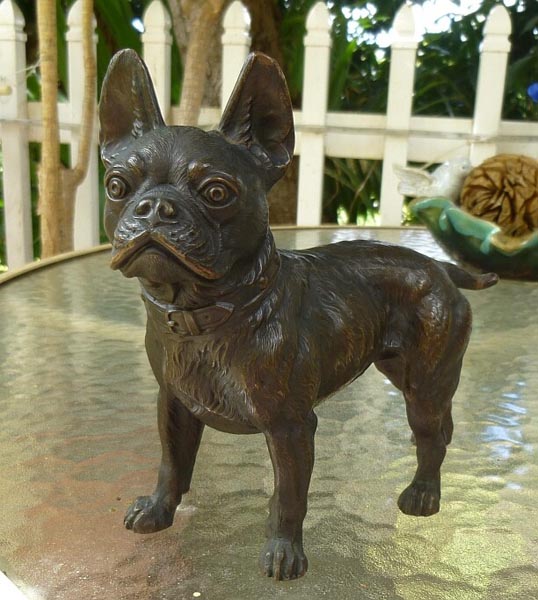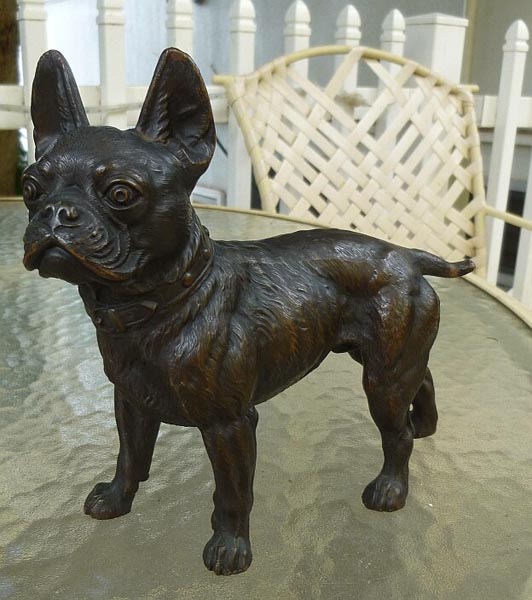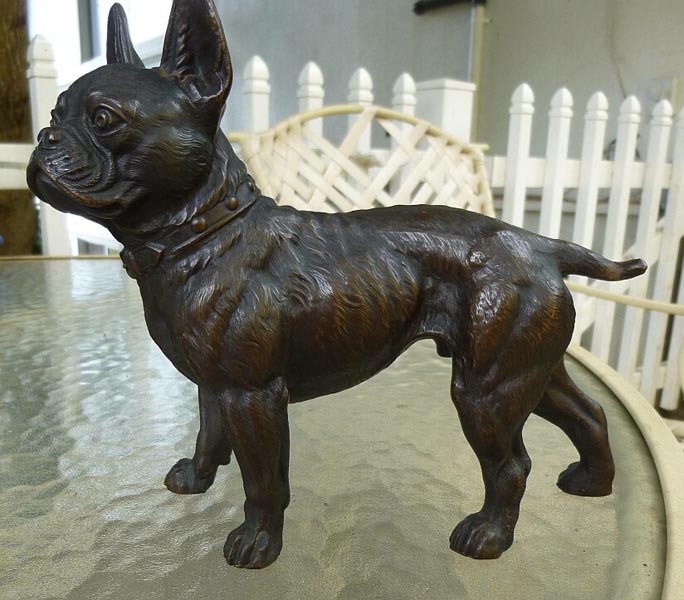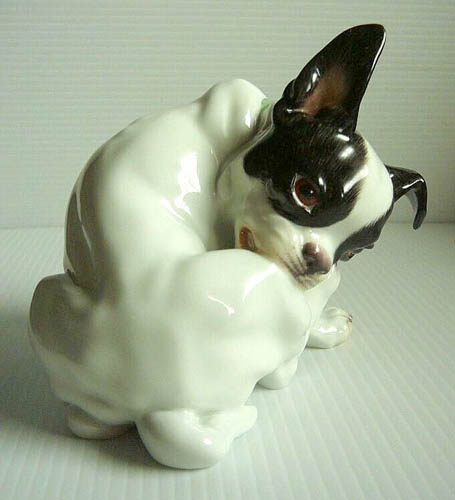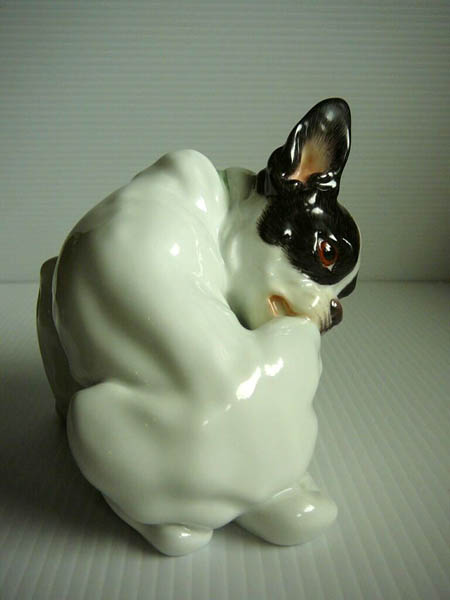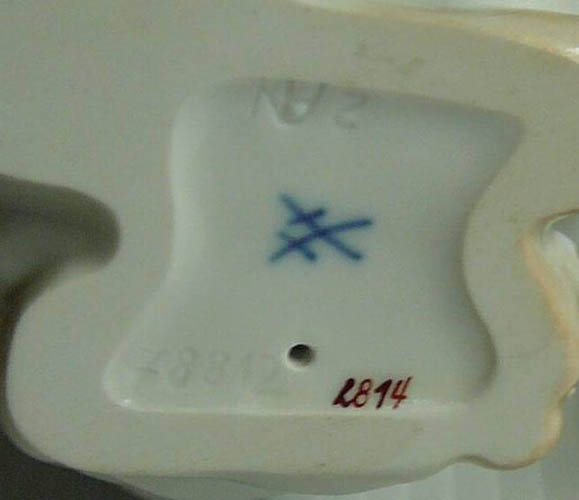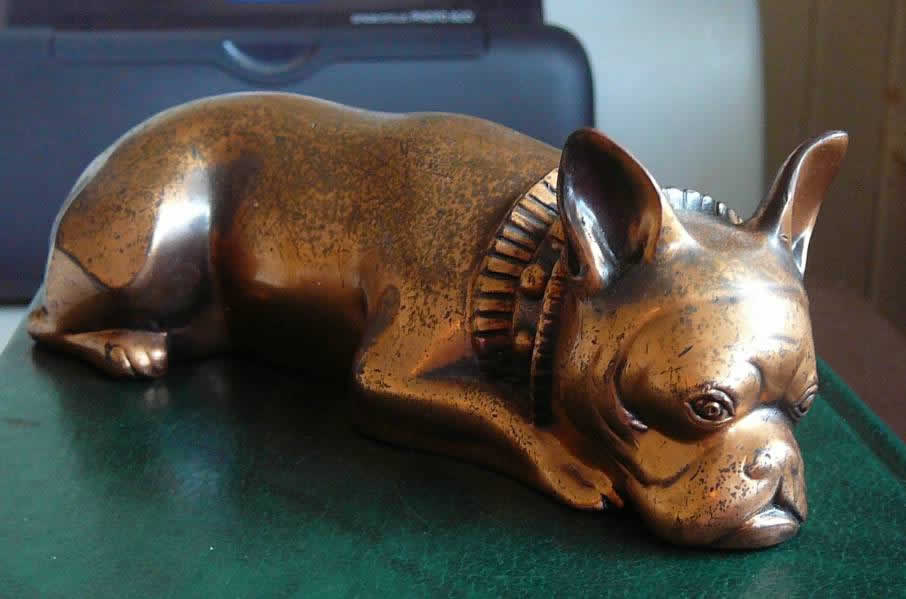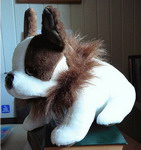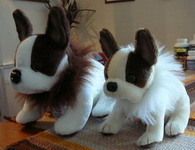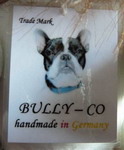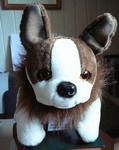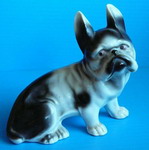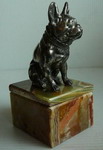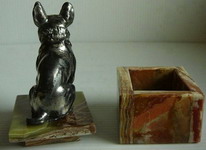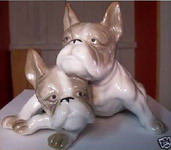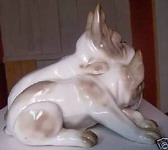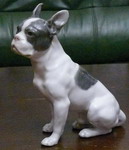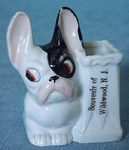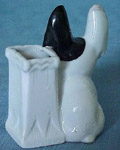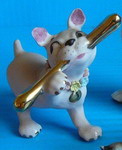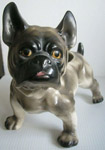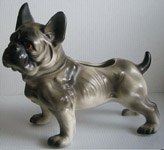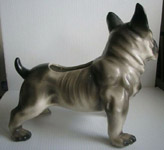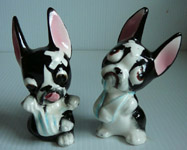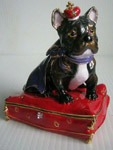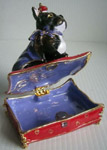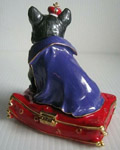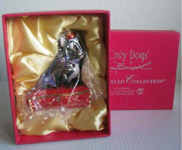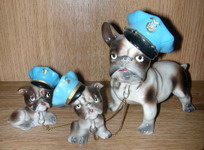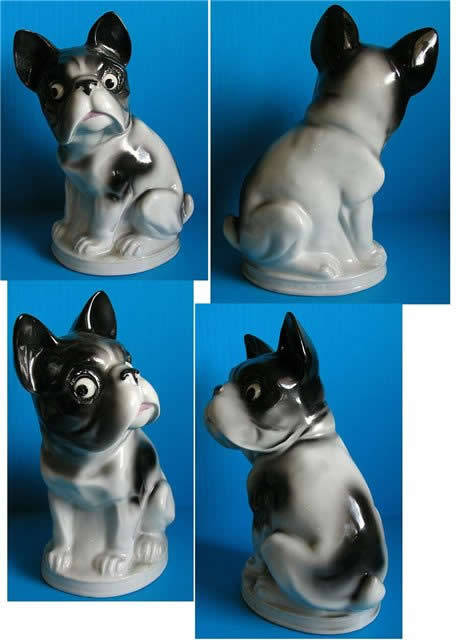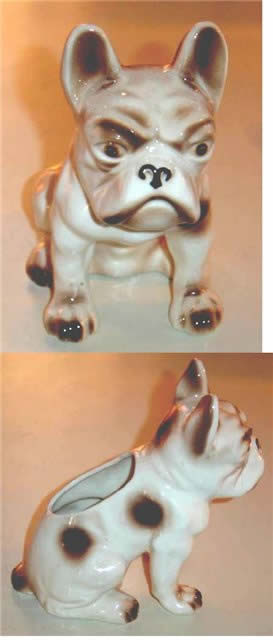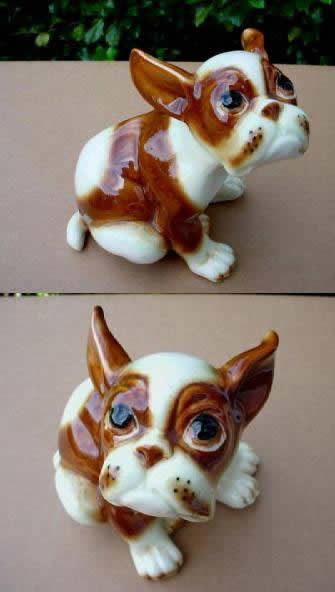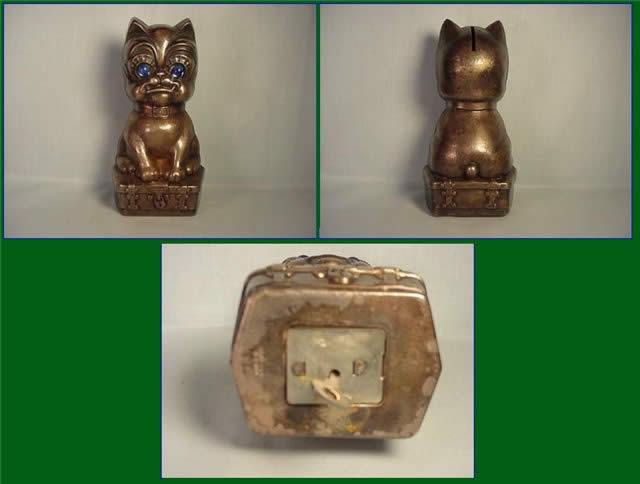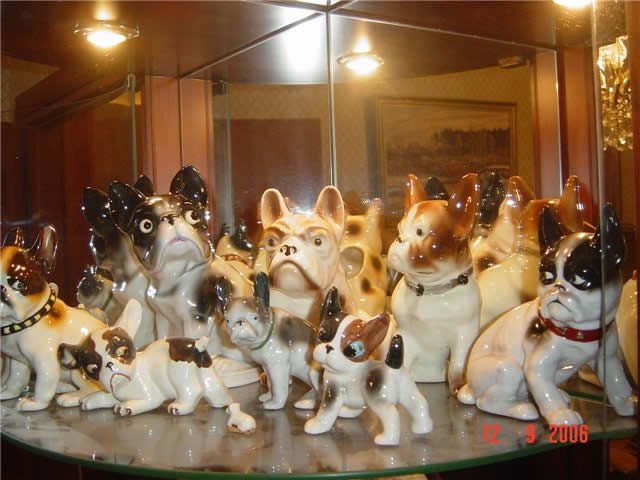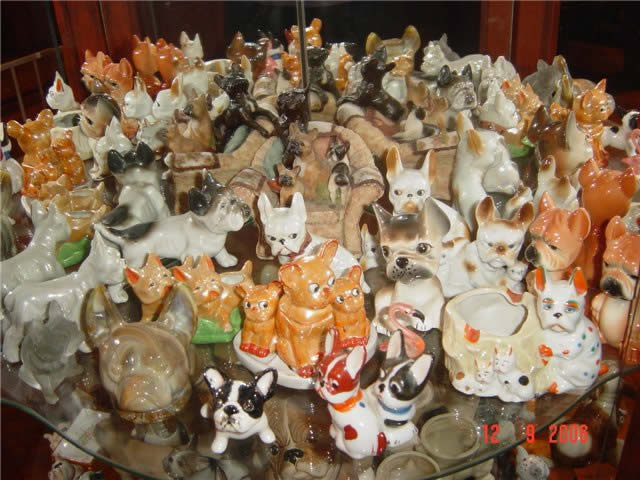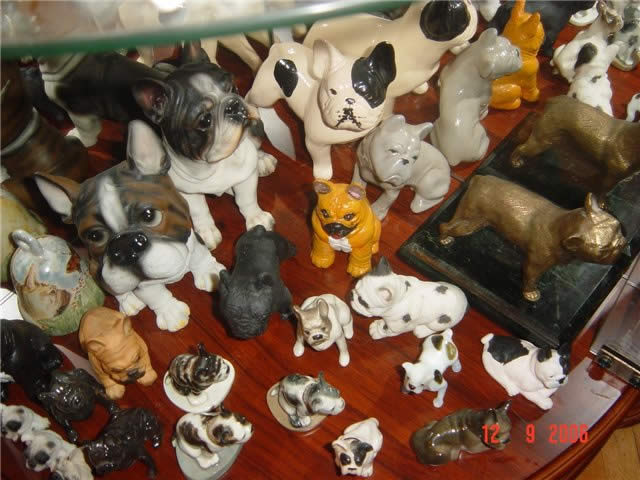Our collection All the
porcelain-figures were made in German and Japan in 1930th. The
big black ones were made by modern Polish craftsman. Glasswares
are from USA and Czechoslovakia. There are a lot of small statuettes
by modern authors in our collection. Moreover we have a big
figurine that was made to order by sculptor S. Glushko in memory
of our fawn French bulldog Gregor. “Some facts from history…”
are written by E.Maksimenko.
We express our thanks to her.
Some facts from French bulldog’s figurines collecting
Actually the first and the most valuable figurines were made
at the same time the breed was born. In the middle of XIX century
the recently appeared French bulldog’s breed rapidly conquered
the hearts of Europeans and came into fashion. At that time
French Bohemians (including high rank courtesans) became to
order the portraits of their pets among which the French bulldogs
were especially popular. So the first and the rarest bronze
figurines of those days were named by dogs that were posing
for sculptors. As for instance the French bulldog’s statuette
weighting 3 kilograms by well-known animalist Pierre Mene was
made in 1850th.
About porcelain
The first French bulldog’s porcelain-figures
appeared at the end of XIX century in advanced develop countries
such as Germany (Rosenthal, Meissen, Hutschenreuther, Karl Ens
and many others) and Austria (Augarten, Keramos, Goldscheider).
All that figurines are extremely rare now and are in a great
requisition (that is no wonder since the amount of figurines
is diminishing with time while the amount of collectors is increasing).
Statuettes that were made before 1930th costs more than $1000.
Pre-1900th ones are much more expensive and it is almost impossible
to get them. At nearly 1920th Japan that was at last opened
for foreigners entered the market with moderately priced porcelain.
The Japanese began to copy European figurines straight away
and sell them much cheaper mainly to the USA. Therefore in Europe
old Japanese porcelain-figures are much more expensive and extremely
rare. With time the Japanese became to make their own figurines
that by design and idea were often better than German. However
they cost cheaper since porcelain was not of so high-quality
and the Japanese craftsmen that paint figurines were less qualified
than Germans. After the Great Patriotic war the situation changed
sharply. The manufacture fell into decay in all industries including
porcelain-ceramic and glass. They did not pay much attention
to quality and there were lack of workers. So the frenchie’s
figurines that were made at 1950-60th are less valued for collectors
than pre-war.
Artistic glass
Europe Czechoslovakia always was a center of
glass-blowing production in Europe. The peak of prosperity was
at the first third of XXth century. Multicolored animals’ figurines
are in great requisition among the collectors. It becomes more
and more difficult to find them. Strange though it may seem
the smallest ones such as dogs’, cats’, frogs’ figurines and
so on are especially popular. All of them formerly were made
in the form of pendant for bracelets and child's necklaces.
Many confectionary plants (for example American Cracker Jack)
bought that figurines wholesale and put them into biscuit boxes
as gifts for Christmas or other holidays. There are a great
number of French bulldog’s figurines of Czechoslovak glass-work.
They vary from 2 to 6 cm and have different colors and hues.
The most valuable among them are those ones which saved their
eyes and antique brass collars with multicolor glass or pearl
pendant. The rarest colors of them are blue, light-blue and
amethystine. So when the real collector visits Czechoslovakia,
especially Prague, he necessarily searches every antiquarian
shop in order to buy something interesting. The price of the
smallest figurine on virtual auctions reaches $200.
The USA Many glass-blowing plants and
factories which products (for example, amazingly beautiful pictures
and lamps Tiffany that costs now more than hundred thousands
dollars on auctions) were so popular in USA at the beginning
of past century are working up to now. Of course the manufacture
now is not of so good quality as earlier. But collectors easy
distinguish old and antique figurines that being sold sometimes
on e-Bay auctions from modern ones. For instance, among the
multicolor glass French bulldogs by Westmoreland glass-blowers
the most valuable are those ones which collars are covered with
gold (but their manufacture stopped by 1960th).
